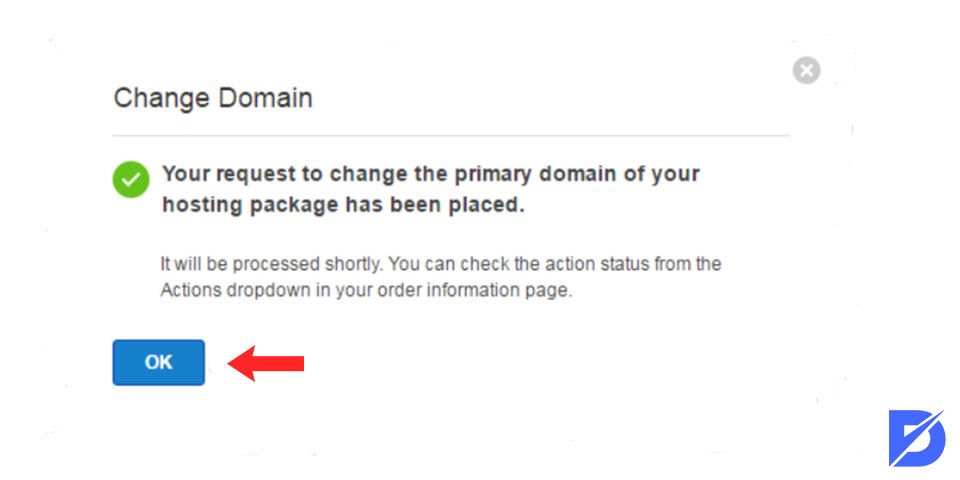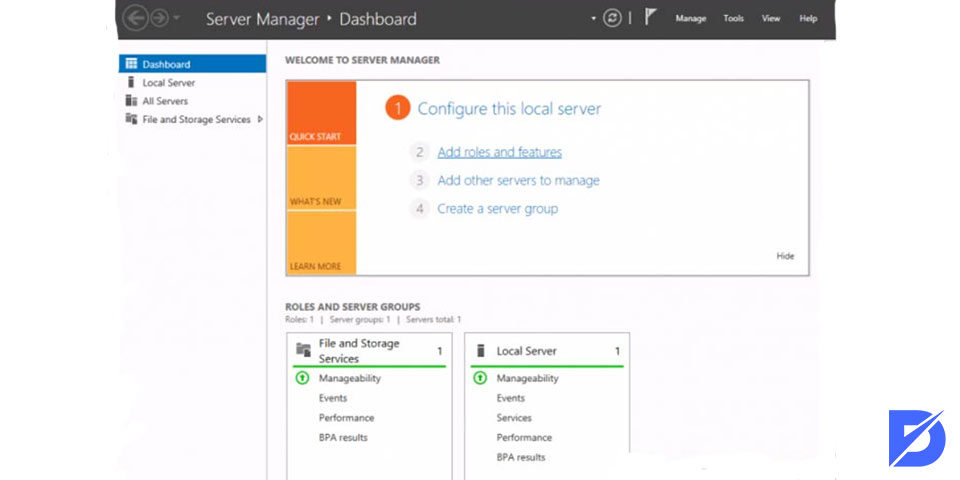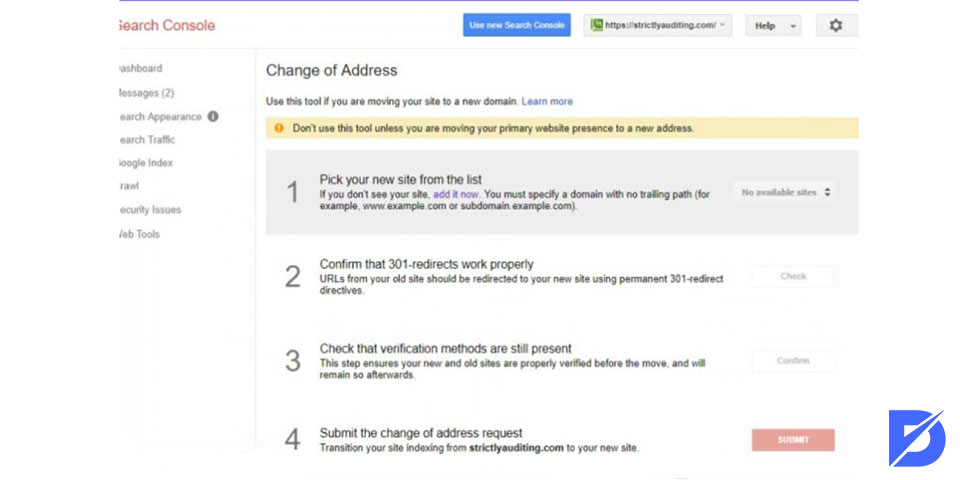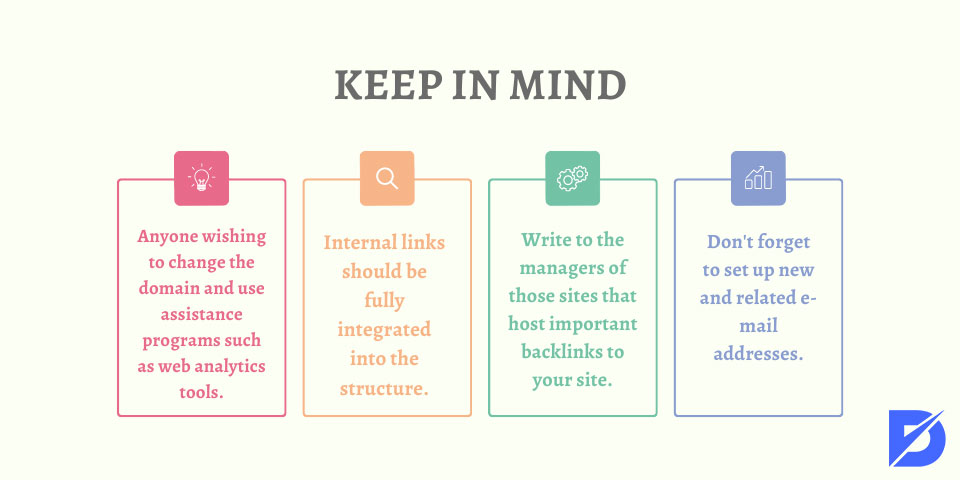You can view a website through a single domain. This Internet address also affects the perception of a website; that is, it can define a thematic area or put the name of a company or brand in the foreground. You can change the domain of a website if you are no longer happy with your Internet address. Only registering a new name and its connection to the site is essential. If the new one still enjoys good search engine rankings thanks to its old one, you should also consider some SEO related aspects and ensure adequate submissions.
The Difference Between Domain Change and Transfer
There is talk of how to change a domain name when the address of a site is replaced. This change primarily concerns the name, so it differs between “domain change” and “domain transfer.”
With a domain transfer, a provider change occurs; the website is transferred to a new server. The modification and the new registration of a name represent only an additional option (it is usually possible to forward a new one to the new provider). In the change of domain, everything revolves around modifying the website address while the provider remains the same.
Domain transfer: The provider changes, so a domain transfer is often referred to as a domain change. The website and domain then move to a new server. How this occurs is described in more detail in this article.
Domain change: The Internet address is changed. A domain change links an existing website to a new one.

When Should a Domain Be Changed?
The reasons for looking for a new Internet address are often trivial. For example, it may happen that the web addresses available no longer appeal to the operator. Or they are no longer suitable for the page’s offer since it has been reorganized thematically. In these cases, the domain name is no longer good for the content of the site.
Reasons for a change of domain could also be a new brand or company name that also requires a change in the Internet address or the purchase of a more suitable one from which it is hoped to obtain a large number of visitors. Also, many of the new top-level domains meanwhile allow you to combine geographic and specific extensions of specific branches and themes to a web address. Those who want to take advantage of these possibilities but still use one of the oldest top-level domains must also change the domain.
If you already plan new content that does not adapt thematically to the site’s topic, a change of domain could be an advisable choice, even if it is not always the best solution. Sometimes it is enough to make some adaptations to the website. This depends on how much the new contents differ from the old ones. Before a change, check if it is the case. If the new content you want to offer on your site is compatible with the identity of the online site and the name, expanding it through subdomains or a subdirectory could often be a solution. As soon as you have identified a new content concept for your site and found an appropriate name, you should also change the address.
How Does a Domain Change Work?
You cannot simply replace your domain with the provider or registrar on which you registered the address. When ICANN stores an Internet address in the Domain Name System database, this cannot be changed in any way. Still, transmitting it to another owner or deleting it is only possible. Therefore you have to secure a new domain and connect it to your website.
Domain Registration
Before the domain’s actual change, you need the rights to the Internet address that you want to use for your website in the future. You will have to connect the new address with the new site as soon as you have found the right name and registered it. You will not have to make major changes to your hosting package and the web content since both the latter and the conditions of use of the website remain unchanged. However, some changes to the server settings are essential to transfer the site to the new domain.

Server Configuration
In some CMS, you can configure the backend settings to connect the contents of the site with the new address. For some CMS, there are also special plugins that facilitate the modification of the web address. In this article, you can find information on the different possibilities and plugins for changing a site’s domain created with WordPress.
Even if a CMS or a plugin can save you some steps during the modification phase. You must manually perform some internal system adaptation procedures. As in detail, the single modification of the web address depends a lot on the software used. However, there are a few procedures you should look out for:

- The server configuration must be adapted to the new one.
- You also need a new SSL certificate if you want to transfer the contents. Ask your provider for it and install the public key on your server.
- If necessary, you must adapt the configured rewrite rules. If you change the name or Internet address of some sites through the forwarding rules, you cannot do without the relative changes in the .htaccess file.
Transfer the Search Engine Positioning of the Old Domain to the New One
People making the domain name change only through the server configurations described above are faced with the following situation: the site can be reached by entering the new address but is treated by the search engines as if it were completely a new website or with a consequently low positioning.
If you are changing domain name, you will inevitably lose your link’s power and the reliability of your old address. If your site hadn’t been rated negatively by Google, Bing, and other search engines and hadn’t been penalized, but it didn’t register a reasonable positioning, you should face the changing domain name SEO impact and aspects while changing website address. Your website otherwise will lose the positive positioning gained with the old one.

Measures to Take Concerning Google
- First, go to the Google Search Console site (formerly Google Webmaster Tools). Here you can verify your new domains and communicate the new web address to Google. For this, you must use the same account that you have already used for registering the old domain.
- If you have retained the rights to the old domain, you should create a new 301 redirect at the new web address. With this method, visitors who view your site using the old name are automatically will forwarded to the new address. Furthermore, in this way, you can prevent the bookmarks of old site visitors and backlinks from falling on deaf ears. In this article, you can get useful information on how to configure the extension. Of course, you can also request the cancellation of the old name with your provider or registrar and avoid the costs related to its maintenance. However, waiting until the new address is stable (about six months as a minimum period) is advisable.
- Now open the Google Search Console to indicate the XML sitemap so that the Google crawler can analyze your site. Check how to make Google crawl and index your website. As a next step, you should immediately request a new crawl of the site to register with the new one in the Google index as soon as possible.
- To conclude, it is necessary to always keep an eye on the positioning of the domain and the site for several weeks: Google recommends extending the period for very large sites to about six months. Analysis tools like Google Search Console and other tools also help you during the monitoring phase.

What Else Is Important to Keep in Mind
An exchange of the Internet address has effects on other areas:
- Anyone wishing to change the domain and use assistance programs such as web analytics tools or CMS extensions should remember that a new Internet address must also be configured. The same if your site uses an Adserver.
- Internal links should be fully integrated into the structure (and you should not forward by redirecting yourself).
- Write to the managers of those sites that host important backlinks to your site. Inform them of the new URLs of the linked posts.
- Don’t forget to set up new and related e-mail addresses. Update all your e-mail contacts to modify your Internet address. (for example, in the signature of the e-mail, on social networks, or on business cards.)
If you want to change your domain, first of all, focus on the adjustments of your site’s server. It will not be reachable through the new address. In many cases, there is the possibility of transferring the positioning on search engines to the new web address. If SEO in your old domain has brought good results and you have received good treatment from Google, you can transfer the positioning, at least in the long term.
Conclusion
In this article, we explained how to change domain name and configure your address. We hope that all the information given in the article above was helpful for you to understand the process of an address change. This process can be stressful if you are unaware of all the little details. But now, you can successfully make changes. See you in another article!
Frequently Asked Questions About
You may wish to change your domain name for several reasons, including rebranding, better domain name availability, or merging websites. If done correctly, a domain change can also help improve your website’s search engine rankings and traffic.
When selecting a new domain name, choose an accessible, relevant to your business, and available name. You can also check domain name tools to develop ideas or purchase an expired domain name suitable to your business.
You can inform search engines about the domain change by submitting a sitemap and updating your website’s robots.txt file. This will help to index your new domain quickly.
You can redirect traffic from your old domain to your new one using 301 redirects. And you can set up the redirects through your web hosting provider or use a plugin if you use a site like WordPress.
Search engines can take several weeks to recognize and update the new domain’s index. You should monitor your website’s traffic and search engine rankings to ensure everything works correctly. Remember to check the Google Search Console and track your progress.





No comments to show.